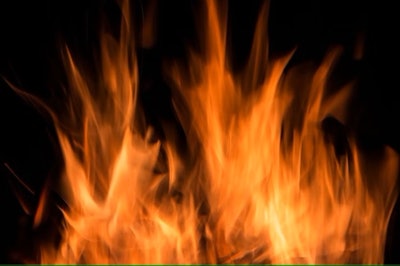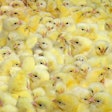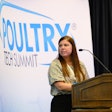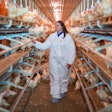
New fire detection technology could help producers detect fire events early on in poultry houses, prevent bird loss and reduce insurance costs for the industry.
Current smoke detector systems are not able to reliably operate in layer houses, especially cage-free environments, due to the amount of dust in the air, leading to a high failure rate, explained Brandon Mulnix, Prism Controls director, commercial accounts, at the 2023 Poultry Tech Summit.
Additionally, standard sprinkler systems are difficult to incorporate into a poultry house due to obstructions that would prevent the water from reaching a fire, limited water supply in house locations and temperature limits in houses that producers preset.
“Fire sprinklers are designed to works at a ceiling temperature of 135˚ F (57˚ C) or greater. Poultry house environmental systems automatically turn on fans at 90-95˚ F (32-35˚ C), which fuels a fire,” explained Mulnix.
Smoke detection is key to preventing loss
Prism Control’s ThERM system is designed to detect smoke in layer barns and override a barn’s ventilation system when smoke is detected to prevent fueling a fire with oxygen.
The smoke detector technology uses air samples to detect smoke through sensors. After detecting smoke particles, it notifies the designated farm employee with an alert and calls the local fire department. The sensors are placed strategically throughout the house in areas where fires are most likely to start, such as near heaters, motors or other electrical sources.
The fire department and employees are notified of the smoke alarm before the temperature has a chance to rise and cause the fans to cut on, explained Mulnix.
The system integrates with a producer’s existing farm equipment and shuts down the systems that could worsen the potential fire. When triggered, the system gives employees a timeframe to determine whether a risk exists before turning the alert off and the equipment back on.
According to Mulnix, the smoke detector system could help producers reduce insurance costs because the cost of a fire event increases the cost of premiums for the entire industry.
“Farms are struggling to be reinsured at an affordable rate,” Mulnix said.
Mulnix said he hopes that, after more research and testing of the system, insurance companies will consider the system as a form of risk prevention when insuring poultry houses with the detector installed. Currently, the system is only installed in layer houses, but Mulnix hopes to expand into broiler houses soon.


















